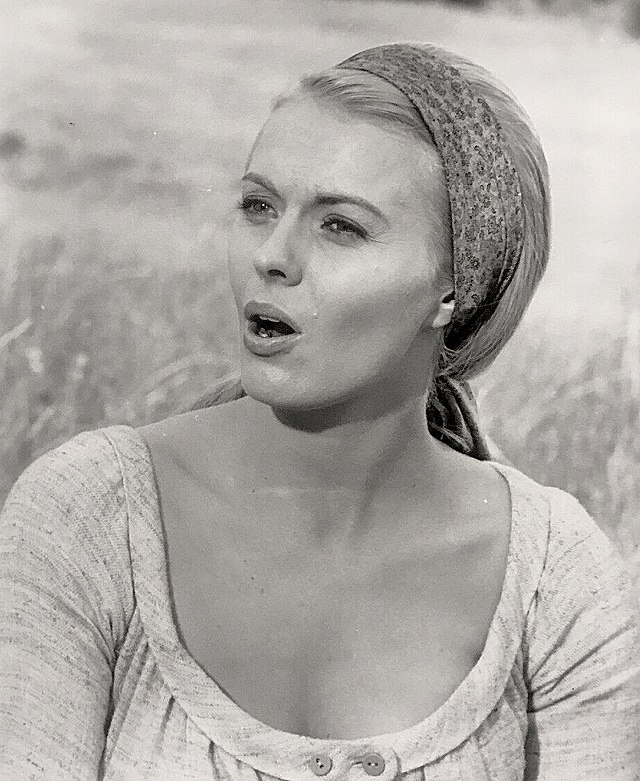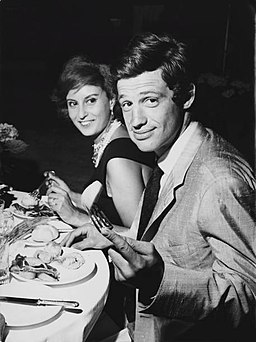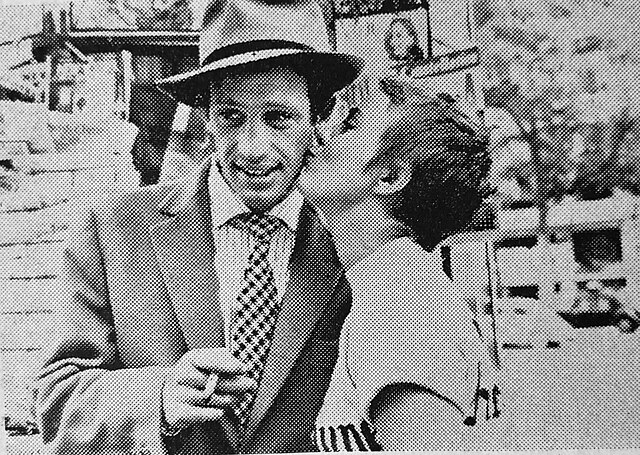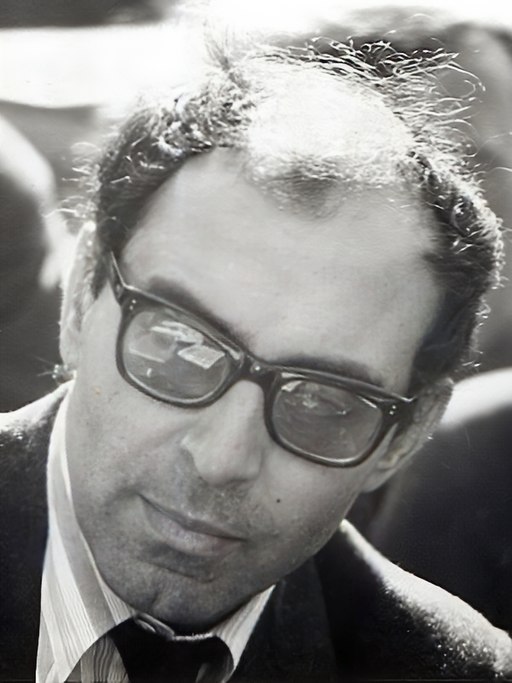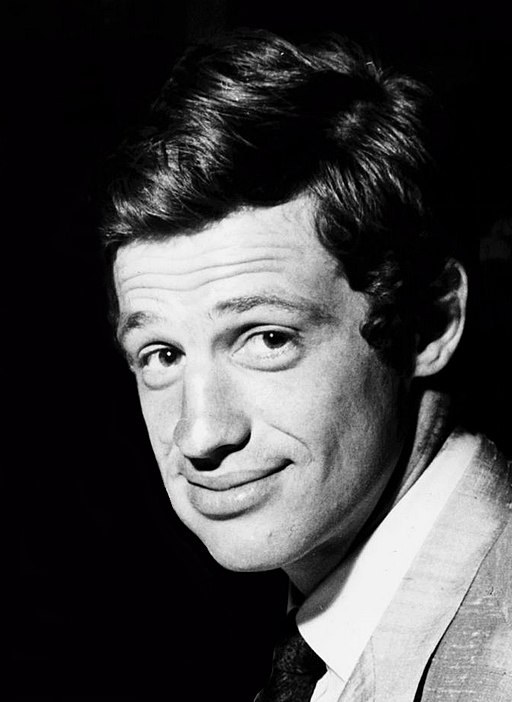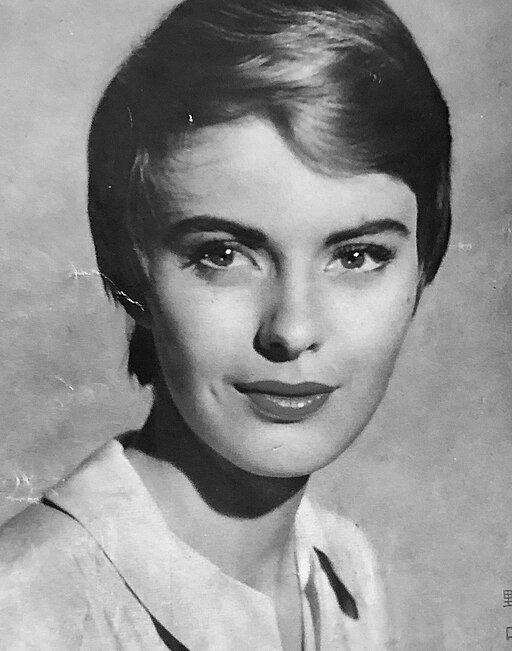Breathless - 1960
back| Released by | Films Around the World |
| Director | Jean-Luc Godard |
| Producer | Georges de Beauregard |
| Script | Jean-Luc Godard, with François Truffaut |
| Cinematography | Raoul Coutard |
| Music by | Martial Solal |
| Running time | 90 minutes |
| Film budget | $100,000 ,- |
| Box office sales | $4 million |
| Main cast | Jean-Paul Belmondo - Jean Seberg |
Breathless (A Bout de Souffle) – 1960
A “breathtaking” revolution in cinematography
"Breathless" is a seminal work of the French New Wave, known for revolutionizing the medium with its bold narrative style, visual innovation, and the introduction of a new, more liberated approach to filmmaking. The story follows Michel Poiccard, a young car thief on the run after killing a policeman. He seeks refuge in Paris, attempting to persuade an American journalism student, Patricia Franchini, to flee to Italy with him.
The film captures the spirit of youthful rebellion and exudes a sense of spontaneity and freedom, both in its narrative and visual style. Godard’s daring approach to storytelling and his willingness to break with conventional filmmaking techniques made "Breathless" a milestone in the history of cinema, and it continues to be celebrated for its influence on the art form.
Related
Breathless (A Bout de Souffle) – Movie analysis
“Breathless” (“À Bout de Souffle”) is a seminal film directed by Jean-Luc Godard that played a crucial role in the French New Wave movement.
Narrative and Thematic Analysis:
- Breaking Conventions: “Breathless” is renowned for its disregard for conventional storytelling techniques. The narrative is disjointed, with an erratic pace, reflecting the chaotic life of its protagonist, Michel Poiccard.
- Themes of Freedom and Rebellion: The film explores themes of existential freedom and rebellion against societal norms. Michel’s character embodies a carefree and rebellious spirit, challenging the status quo and living life on his own terms.
- Moral Ambiguity: The film delves into the moral ambiguity of its characters, particularly Michel. His charm and carelessness are juxtaposed with his criminal actions, creating a complex character that defies easy categorization.
Visual and Technical Analysis:
- Innovative Cinematography: Raoul Coutard’s cinematography was groundbreaking, employing handheld camera techniques and the innovative use of jump cuts. This created a sense of immediacy and intimacy, bringing the audience closer to the characters and their world.
- Homage to Film Noir: The film pays homage to the film noir genre, with its crime-centric plot, urban setting, and the use of a femme fatale character. However, Godard subverts genre expectations, injecting a French New Wave sensibility into the film.
- Use of Real Locations: Godard’s use of real Parisian locations added authenticity to the film, breaking away from the artificiality of studio sets.
Performance Analysis:
- Jean-Paul Belmondo as Michel Poiccard: Belmondo delivers a charismatic performance, capturing Michel’s carefree spirit and moral ambiguity. His casual demeanor and charismatic presence make Michel a captivating anti-hero.
- Jean Seberg as Patricia Franchini: Seberg’s performance is crucial to the film, providing a counterpoint to Michel’s reckless behavior. Her American identity and aspirations of becoming a journalist add layers to her character, highlighting the cultural and personal differences between her and Michel.
Influence and Legacy:
- Catalyst for the French New Wave: “Breathless” is often credited with kickstarting the French New Wave, influencing countless filmmakers and changing the landscape of world cinema.
- Enduring Impact: The film’s innovative techniques, thematic complexity, and charismatic performances have ensured its lasting impact on cinema. It continues to be studied, celebrated, and emulated by filmmakers and cinephiles alike.
Conclusion:
“Breathless” stands as a testament to the power of innovation in cinema. Godard’s fearless approach to filmmaking, combined with stellar performances and groundbreaking cinematography, created a film that challenged conventions and left an indelible mark on the history of film. It captures the spirit of rebellion and the desire for freedom, themes that remain relevant to this day, making “Breathless” a timeless classic.
Complete cast of Breathless:
- Jean-Paul Belmondo as Michel Poiccard / Laszlo Kovacs: A young car thief and the film’s central character, on the run after stealing a car and killing a policeman.
- Jean Seberg as Patricia Franchini: An American journalism student and aspiring writer, who becomes romantically involved with Michel.
- Daniel Boulanger as Police Inspector Vital: The inspector investigating the car theft and subsequent murder committed by Michel.
- Henri-Jacques Huet as Antonio Berrutti: A friend of Michel.
- Roger Hanin as Carl Zubart: Patricia's ex-boyfriend.
- Van Doude as The Journalist: A journalist acquaintance of Patricia.
- Claude Mansard as Claudius Mansard: A friend and contact of Michel.
- Liliane Dreyfus as Liliane / Minouche: A friend of Michel.
- Jean-Pierre Melville as Parvulesco: A famous writer whom Patricia interviews at Orly Airport.
- Jean-Luc Godard as The Snitch (uncredited): The man who informs the police about Michel’s whereabouts.
- Richard Balducci as Tolmatchoff (uncredited): A man in a car.
- André S. Labarthe as A Minutious Clerk (uncredited): A small role as a clerk.
- François Moreuil as A Young Man in a Car (uncredited): Another small role.
- Liliane Robin as A Prostitute (uncredited): Appears briefly in the film.
- Jean Domarchi as A Drunk (uncredited): A minor role.
Analysis of Jean-Luc Godard’s direction:
ean-Luc Godard’s direction in "Breathless" ("À Bout de Souffle") is widely regarded as revolutionary, marking a significant departure from the conventions of cinema at the time and playing a pivotal role in the French New Wave movement.
Aesthetic Innovation:
- Jump Cuts: One of the most noticeable and influential aspects of Godard’s direction in "Breathless" is his use of jump cuts. By removing sections of a continuous shot, he created a jerky, disjointed effect that added a sense of urgency and unpredictability to the film.
- Handheld Cinematography: Godard and cinematographer Raoul Coutard embraced handheld camera work, lending a raw, documentary-like feel to the film. This created a sense of immediacy and intimacy, pulling the audience into the world of the characters.
Breaking Narration Conventions:
- Non-Linear Storytelling: Godard’s approach to storytelling in "Breathless" was non-traditional, with a narrative that doesn’t follow a strict linear progression. The film’s erratic pacing and loose structure reflect the chaotic, unpredictable nature of Michel’s life.
- Ambiguous Characters: The characters in "Breathless" are complex and morally ambiguous, particularly the protagonist Michel. Godard’s direction ensures that the audience is both captivated by Michel’s charisma and made uncomfortable by his moral transgressions.
Influence of Film Noir:
- Homage and Subversion: While "Breathless" contains elements of the film noir genre, including its crime-centric plot and femme fatale character, Godard subverts genre expectations, infusing the film with a New Wave sensibility and a sense of playfulness.
Use of Real Locations:
- Authenticity: Godard’s choice to shoot on location in Paris added a layer of authenticity to the film. The bustling streets, cafes, and apartments provide a tangible, lived-in setting that enhances the film’s realism.
Integration of Philosophical Themes:
- Existential Undertones: The film explores themes of freedom, rebellion, and the meaning of life. Godard’s direction ensures that these themes are woven seamlessly into the fabric of the film, inviting the audience to engage with the philosophical questions posed by the narrative.
Legacy and Impact:
- A Catalyst for Change: "Breathless" is widely regarded as a seminal work in the history of cinema, and Godard’s innovative direction played a crucial role in this. The film challenged established filmmaking conventions and opened the door for a new generation of filmmakers to experiment and innovate.
Analysis of Jean Seberg’s performance:
Jean Seberg’s portrayal of Patricia Franchini in "Breathless" ("À Bout de Souffle") is a pivotal element of the film, contributing significantly to its lasting impact and appeal. Her character is complex, embodying the youthful rebellion and existential questioning that are central themes of the French New Wave movement.
Ambiguity and Complexity:
- Moral Ambivalence: Patricia presents a paradox; she is at once innocent and complicit. Her involvement with Michel, a criminal on the run, reveals a darker, more complex side to her character. Seberg’s nuanced performance captures this moral ambiguity, leaving the audience to grapple with their own perceptions and judgments.
Symbol of Freedom:
- Nonconformity: Patricia is an American living in Paris, studying journalism and aspiring to be a writer. This positions her as a character of independence and nonconformity, embodying the spirit of the French New Wave. Seberg’s portrayal captures this sense of freedom and rebellion, making Patricia a captivating and enigmatic figure.
Feminine Mystique:
- Femme Fatale Elements: While Patricia does not fully embody the classic femme fatale archetype, there are elements of this character type in her role. Her allure and mystery draw Michel in, yet she maintains a degree of detachment. Seberg’s performance balances this seductive quality with a sense of vulnerability and innocence.
Emotional Complexity:
- Inner Conflict: Patricia’s internal struggle is a central aspect of her character. She is torn between her feelings for Michel and her moral compass, between her desire for freedom and her need for stability. Seberg’s portrayal delves into this emotional complexity, delivering a performance that is both raw and authentic.
Role in the Narrative:
- Catalyst for Change: Patricia’s presence acts as a catalyst for the unfolding events of the film. Her interactions with Michel drive the narrative forward, and her ultimate decision shapes the film’s climax. Seberg’s performance ensures that Patricia is not merely a secondary character; she is integral to the story and its themes.
Cultural Impact:
- Iconic Performance: Jean Seberg’s role as Patricia in "Breathless" has become iconic, contributing to her status as a style and cinema icon of the era. Her pixie haircut and New York Herald Tribune t-shirt have become synonymous with the film, embodying the chic, rebellious spirit of the 1960s.
Conclusion:
Jean Seberg’s portrayal of Patricia Franchini stands as a highlight of her career and a defining element of "Breathless." Her ability to capture the complexity, rebellion, and vulnerability of the character contributes to the film’s depth and enduring appeal. Patricia is not simply a love interest or a plot device; she is a fully realized character, brought to life through Seberg’s memorable and nuanced performance.
Analysis of the performance of Jean-Paul Belmondo:
Jean-Paul Belmondo’s performance as Michel Poiccard in "Breathless" is a seminal example of the French New Wave’s impact on cinema and the creation of unconventional, charismatic antiheroes. Michel is a complex character whose actions and demeanor challenge traditional cinematic and moral standards, making Belmondo’s portrayal a critical component of the film’s success and lasting influence.
Rebellious Charm:
- Charm and Charisma: Despite his criminal activities and moral ambiguities, Michel exudes a captivating charm. Belmondo’s natural charisma and carefree attitude draw the audience in, making it difficult to categorically condemn Michel’s actions.
- Antihero: Michel embodies the antihero archetype. He is flawed, operates outside the law, and yet, he is undeniably compelling. Belmondo’s performance captures this duality, balancing Michel’s roguish charm with moments of vulnerability.
Embracing Existentialism:
- Existential Rebel: Michel is a character deeply influenced by existential thought. He navigates life on his own terms, embracing a hedonistic and nihilistic philosophy. Belmondo’s portrayal reflects this existential rebellion, adding depth to Michel’s character and aligning with the French New Wave’s thematic preoccupations.
- Nonconformity: Michel rejects societal norms and expectations. Belmondo’s portrayal accentuates this nonconformity, highlighting Michel’s disdain for authority and conventional living.
Physicality and Style:
- Casual Demeanor: Michel’s physicality is a crucial aspect of his character. Belmondo’s casual, almost languid demeanor communicates Michel’s disregard for societal expectations and enhances his allure.
- Iconic Style: Belmondo’s wardrobe and styling in the film contributed to creating an iconic look that encapsulated the spirit of the era and the French New Wave. His fedora, sunglasses, and cigarette became emblematic of a certain cool, rebellious chic.
Complexity and Ambiguity:
- Moral Ambiguity: Michel is not a straightforward character. His actions and motivations are complex, and Belmondo’s nuanced performance ensures that Michel remains an enigma, challenging the audience to question their own moral compass.
- Vulnerability: Despite his tough exterior, Michel has moments of vulnerability, particularly in his interactions with Patricia. Belmondo’s ability to convey these moments adds layers to Michel’s character, making him a more relatable and tragic figure.
Legacy and Impact:
- Defining Role: Jean-Paul Belmondo’s role as Michel Poiccard became a defining moment in his career and a landmark in cinematic history. His portrayal of Michel helped to establish the antihero as a viable and compelling protagonist in film.
- Influence on Cinema: Michel’s character, as portrayed by Belmondo, had a profound influence on cinema, inspiring future generations of filmmakers and actors to embrace complex, unconventional characters.
Important quotes from the movie:
Michel Poiccard (Jean-Paul Belmondo): “If you don’t like the sea, if you don’t like the mountains, if you don’t like the city…then get stuffed!”
- This quote encapsulates Michel’s carefree and rebellious attitude towards life. He lives by his own rules and doesn’t care what others think.
Patricia Franchini (Jean Seberg): “What is your greatest ambition in life?”
- This line is part of a series of questions Patricia asks Michel, revealing her curiosity and desire for a deeper understanding of him.
Michel Poiccard: “I want to become immortal, and then die.”
- This paradoxical statement reflects Michel’s complex character and his existential views on life and death.
Patricia Franchini: “When we talked, I talked about me, you talked about you, when we should have talked about each other.”
- Patricia’s realization points to the lack of genuine communication and connection in her relationship with Michel, highlighting themes of isolation and misunderstanding.
Michel Poiccard: “Women are made to be loved, not understood.”
- This quote reflects Michel’s simplistic and somewhat chauvinistic view on women, demonstrating his character's flaws and the complexity of his relationship with Patricia.
Patricia Franchini: “I don’t know if I’m unhappy because I’m not free, or if I’m not free because I’m unhappy.”
- Patricia’s introspection reveals her internal struggle with freedom and happiness, central themes in the film.
Michel Poiccard: “The minute you bought your ticket, you were in another world.”
- Michel's line captures the escapism and transient nature of life, themes that are prevalent throughout the film.
Awards and Nominations for Breathless:
While the list of formal accolades for "Breathless" may seem short, the film’s real award is its lasting legacy. It is often cited as one of the greatest films of all time and has influenced countless filmmakers worldwide.
Berlin International Film Festival 1960:
- Jean-Luc Godard was nominated for the Golden Bear, the festival's top prize.
Jean Vigo Prize 1960:
- Jean-Luc Godard won the Jean Vigo Prize for "Breathless," an award established to honor young French directors showing innovation and independence in their work.


